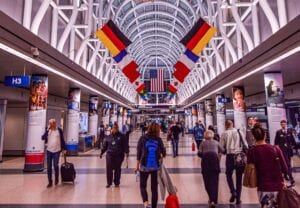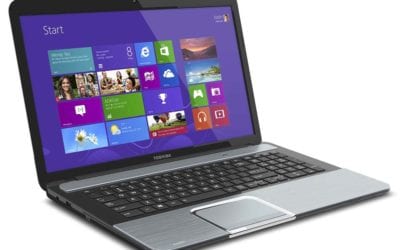In an ideal travel world, all fights would be non-stop. But realistically, that isn’t going to happen.

1. Try to travel on one airline, if possible
These days, this is easier said than done. Often, an international connection shown on United Airlines, for example, might be United connecting to an aircraft operated by Lufthansa. With a code-share. I don’t care what airlines say — code-shares are not as seamless as they imply.
Not that either airline will be malicious, but the truth is airlines do not care as much about another carrier’s passengers as they will about their own. This is especially so in terms of holding planes for a late-arriving connecting flight, getting baggage transferred, etc. Of course, how often have we seen any real consideration for passengers?
Consider a commuter carrier as a two-airline domestic connection. (In most cases, they actually are.)

This is all in spite of DOT requiring that “Express” flights be bundled together with the main carrier for lost luggage reports and late arrivals statistics.
Last year, for example, I was on a United flight into Chicago that was delayed upon arrival by the gate not being available. I only had about 15 minutes to make my connection. After running at as close to full speed as I can get with a carry-on rolling bag, I was told at the United Express flight (in another concourse) that I had missed check-in time. As were four other passengers from my original flight who arrived a few minutes later. United Express claimed they had not been advised of any connecting passengers by United and it was now too late.
On the other hand, when flying on United across the Atlantic I connected on Lufthansa to Poland via Munich. The partner airline made sure that I made my connection. If only that would happen here in my home country.
2. “Minimum connecting time” is an inexact science.
Don’t assume just because a website says it works that the connecting flights have enough time between them. I get asked all the time when I offer flights to clients with connecting times ranging from 45 minutes to 2 hours, “Is that enough?” And the answer is, “Well, usually, but …”
The basic answer is that airlines don’t schedule connections they can’t generally meet, because it is a major hassle to deal with passengers and luggage that don’t make those connections.
On the other hand, the “minimum connecting time” doesn’t allow for stopping for snacks or a meal between flights (especially for families with children where not eating is not an option), or for travelers who might not move as fast as they used to, or for any delays whatsoever.
3. Consider the likely weather in your connecting city.
The short version of this is that it snows in a lot of connecting cities in winter (and often in fall and spring, too). Some cities deal with snow and other weather better than others. Minneapolis Airport, for example, seldom closes. Denver manages some storms, but not all of them. Places like Atlanta and Washington, D.C., may seldom get snow, but when they do, it closes them down completely.
In addition, there are other local climate issues that come up regularly that result in missed connections. Thunderstorms form in Chicago, New York, and Dallas. They are a regular problem that can delay flights in the summers. Clouds and fog at San Francisco Airport delay flights regularly as well, especially during the winter rainy season. And, winds have caused thousands of cancellations during this past summer for several carriers.
4. Ask your travel agent’s advice or research online, about temporary airport issues.
For example, most (but admittedly not all) agents know that JFK airport had major runway closures during recent years. This caused huge delays that may not be reflected in schedules. However, during the post-pandemic period and the depths of the pandemic, flights were curtailed. Many of the problems were avoided. As we return to normal services, check what is happening at connection airports.
5. Consider the worst-case scenario in case of missed connections.
If you are on, say, American Airlines in Chicago and you miss a connecting flight to LaGuardia, there will likely be another flight within an hour. If you are on Delta Air Lines in Atlanta and miss the only flight to Madrid, you will wait 24 hours for the next flight. United has plenty of flights between Chicago and Denver. However, there is only one plane flying to Dublin, let’s say.
We have also been spoiled during the pandemic by having plenty of open seats on most flights. It makes a big difference whether you are traveling, say, on a Wednesday in April or on a summer weekend. Midweek flights normally have plenty of backup space, but weekend summer flights are normally packed. Missing your connection when following flights are packed can mean lots of extra time at the airport.
And finally, a lot of it comes down to your own personal missed-connection comfort level. If you are the type of person who likes getting to the airport just in time to board when you have cleared security, you may feel more comfortable with a tight connection. If you get nervous without plenty of extra time to check in for your original flight, then why stress yourself out with a tight connection?
READ ALSO:
Should airlines be liable for missed connections?
How COVID connections have made connecting airports extra important
George Washington’s 1789 Thanksgiving Proclamation
Janice Hough is a California-based travel agent a travel blogger and a part-time comedy writer. A frequent flier herself, she’s been doing battle with airlines, hotels, and other travel companies for over three decades. Besides writing for Travelers United, Janice has a humor blog at Leftcoastsportsbabe.com (Warning, the political and sports humor therein does not represent the views of anyone but herself.)




